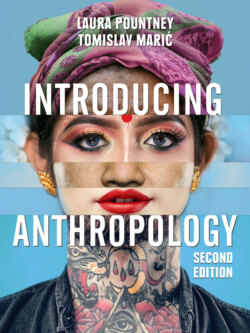Читать книгу Introducing Anthropology - Laura Pountney - Страница 26
Where did modern humans originate from?
ОглавлениеDespite the success and diversity of our ancestors, coupled with the fact that we still carry genetic information from our ancestors, only one hominin species survived: modern Homo sapiens. Not all scientists agree on the levels of contact or conflict that these early forms of humans had with each other, the extent of interbreeding that occurred, or the factors that influenced the evolution and extinction of other hominin species. However, from the recent discoveries described above, we know that early humans overlapped far more than originally thought. We do know that Homo sapiens evolved in Africa around 200,000 years ago and first migrated in small numbers into Asia, probably between 130,000 and 115,000 years ago, by travelling up the Nile to the Levant. However, the ancestors of all current humans migrated into Europe later, around 60,000 years ago, and it was not until much later still that modern humans populated other parts of the world. For instance, people probably first arrived in Australia within the past 50,000 years and in the Americas within the past 16,000 years or so. By 14,000 years ago, our species had spread to every continent except Antarctica. The beginnings of farming and complex societies occurred within the past 12,000 years. Understanding the success of our species remains a fundamental question for evolutionary anthropologists. This problem brings us back to the question of what differentiates us both from our closest living relatives, the apes, and from extinct hominins.
